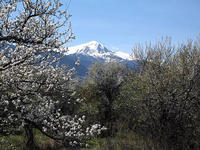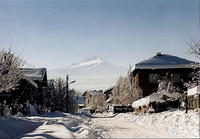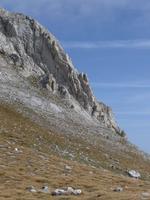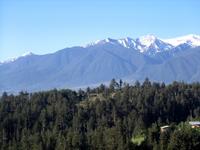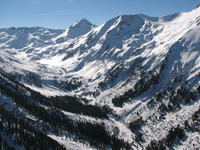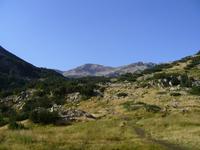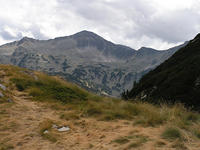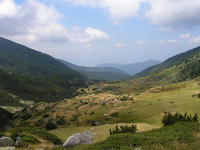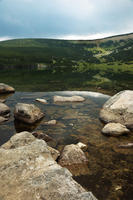You are in: Europe -> Bulgaria -> Pirin National Park, and traditional search or Image Gallery will yield results of this site only
Pirin National Park
| Site number: | 225 |
|
| Type of site: | Natural | |
| Date of Inscription: | 1983 | |
| Location: | Europe, Bulgaria, Pirin Mountain, Blagoevgrad Province | |
Up to 75 images are shown here. Click on each for more details or on Image Gallery for more images.
| Description: | Pirin National Park extends over an area of 27,400 ha in south-west Bulgaria lying at an altitude of 1,008–2,914 m in the Pirin Mountains; the park has a limestone Balkan landscape, with lakes, waterfalls, caves and pine forests. The rugged mountains dotted with about 70 glacial lakes are home to hundreds of endemic and rare species, several of which represent the Balkan Pleistocene flora; diverse and unique landscapes of great aesthetic value are also prevalent to the mountains. --WHMNet paraphrase from the description at WHC Site, where additional information is available. | |
| Pirin National Park is a World Heritage national park that encompasses the larger part of the Pirin Mountains in the southwest of Bulgaria. It has an area of 274 km² and lies at an altitude from 1,008 to 2,914 m. Two nature reserves are located within the boundaries of the park, Bayuvi Dupki–Dzhindzhiritsa, one of the oldest in the country, and Yulen. The park's boundaries and size have stood many changes through the course of history. Vihren National Park was created on 8 November 1962 with the purpose of preservation of the forests in the highest parts of the mountain. The park had an area of 62 km², which is a small part of its modern territory. It was renamed to Pirin People's Park in 1974 with a ministerial decree and its territory was considerably enlarged. A separate park administration was established in 1979 with its seat in Bansko. The park was included in the UNESCO World Heritage List in 1983, and after a protected areas law was approved in 1998, the area was proclaimed a national park, embracing a territory of 403.32 km². The huge relief diversity of the park is the reason for the variety of plant species on its territory, making it one of the most botanically interesting areas in Bulgaria. General examination of Pirin's flora have been conducted at the end of the 19th and the beginning of the 20th century. About 1300 species of higher plant species can be observed within the park, which constitute more than 30% of all higher plants on the territory of Bulgaria. Besides this, about 300 moss species and a large amount of alge have been determined. The park is a home to 18 local endemic species, 15 Bulgarian and many Balkan endemic and a large quantity of preserved species, such as the Edelweiss, a symbol of Pirin. The total number of preserved species is about 60, whereas 126 are listed in the Bulgarian Red Book of Endangered Species. Three plant belts are differentiated within the Pirin National Park, a forest one, a subalpine one and an alpine one, which is due to the relatively high location of the entire park. --Wikipedia. Text is available under the Creative Commons Attribution-ShareAlike License. | ||
| Source: | http://whc.unesco.org/en/list/225 | |
| Reference: | 1. UNESCO World Heritage Center, Site Page. | |





